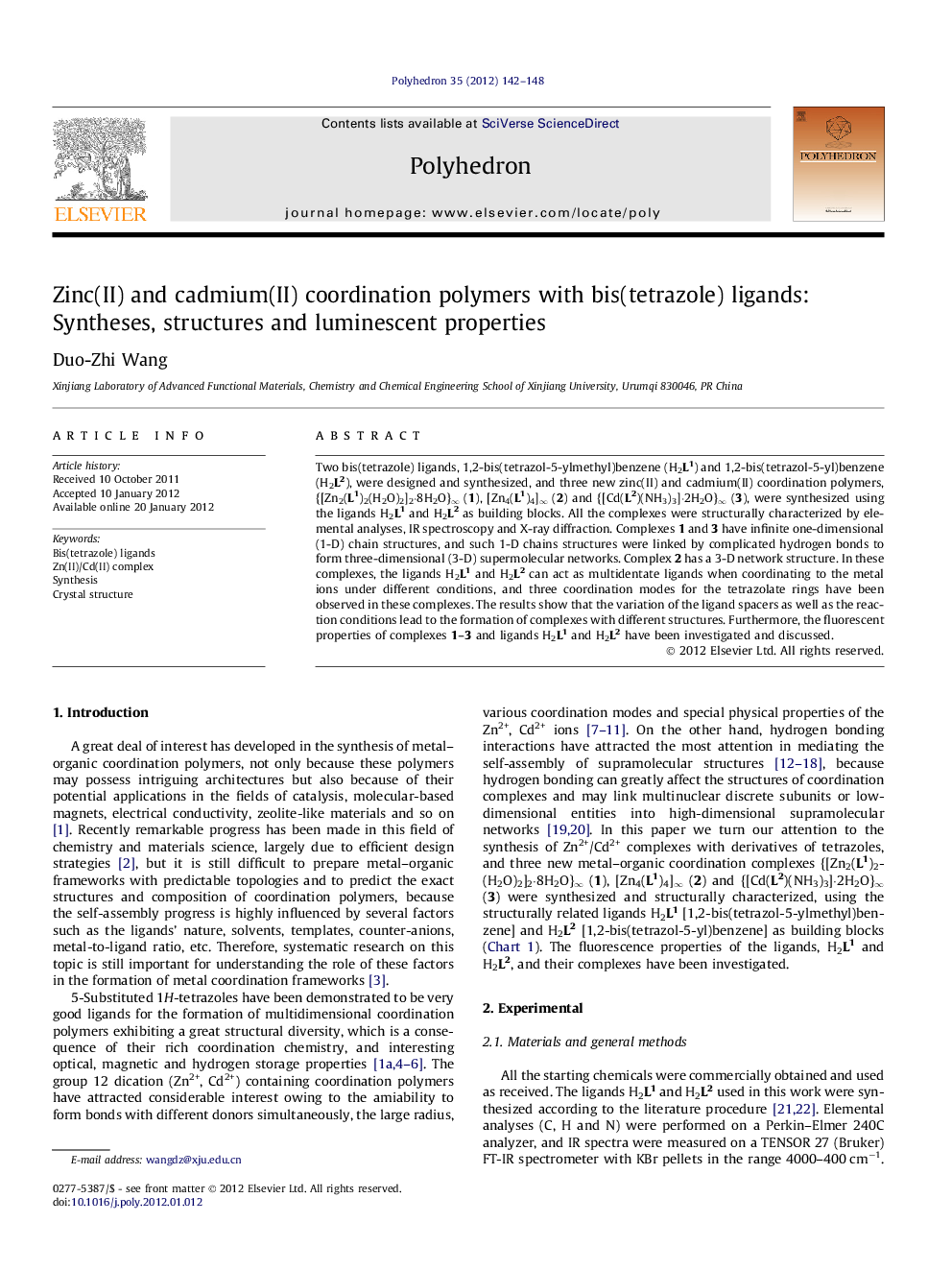| کد مقاله | کد نشریه | سال انتشار | مقاله انگلیسی | نسخه تمام متن |
|---|---|---|---|---|
| 1337810 | 979646 | 2012 | 7 صفحه PDF | دانلود رایگان |

Two bis(tetrazole) ligands, 1,2-bis(tetrazol-5-ylmethyl)benzene (H2L1) and 1,2-bis(tetrazol-5-yl)benzene (H2L2), were designed and synthesized, and three new zinc(II) and cadmium(II) coordination polymers, {[Zn2(L1)2(H2O)2]2·8H2O}∞ (1), [Zn4(L1)4]∞ (2) and {[Cd(L2)(NH3)3]·2H2O}∞ (3), were synthesized using the ligands H2L1 and H2L2 as building blocks. All the complexes were structurally characterized by elemental analyses, IR spectroscopy and X-ray diffraction. Complexes 1 and 3 have infinite one-dimensional (1-D) chain structures, and such 1-D chains structures were linked by complicated hydrogen bonds to form three-dimensional (3-D) supermolecular networks. Complex 2 has a 3-D network structure. In these complexes, the ligands H2L1 and H2L2 can act as multidentate ligands when coordinating to the metal ions under different conditions, and three coordination modes for the tetrazolate rings have been observed in these complexes. The results show that the variation of the ligand spacers as well as the reaction conditions lead to the formation of complexes with different structures. Furthermore, the fluorescent properties of complexes 1–3 and ligands H2L1 and H2L2 have been investigated and discussed.
Three new metal–organic coordination complexes, [Zn2(L1)2(H2O)6]∞ (1), [Zn4(L1)4]∞ (2) and [Cd(L2)(NH3)3(H2O)2]∞ (3) were synthesized and structurally characterized, using the structurally related ligands 1,2-bis(tetrazol-5-ylmethyl)benzene (H2L1) and 1,2-bis(tetrazol-5-yl)benzene (H2L2) as building blocks. Complexes 1 and 3 have infinite 1-D chain structures, and such 1-D chains structures are linked by complicated hydrogen bonds to form 3-D supermolecular networks. Complex 2 has a 3-D network structure. The ligands H2L1 and H2L2, and their corresponding complexes exhibit luminescent emissions in the solid state at room temperature.Figure optionsDownload as PowerPoint slide
Journal: Polyhedron - Volume 35, Issue 1, 16 March 2012, Pages 142–148